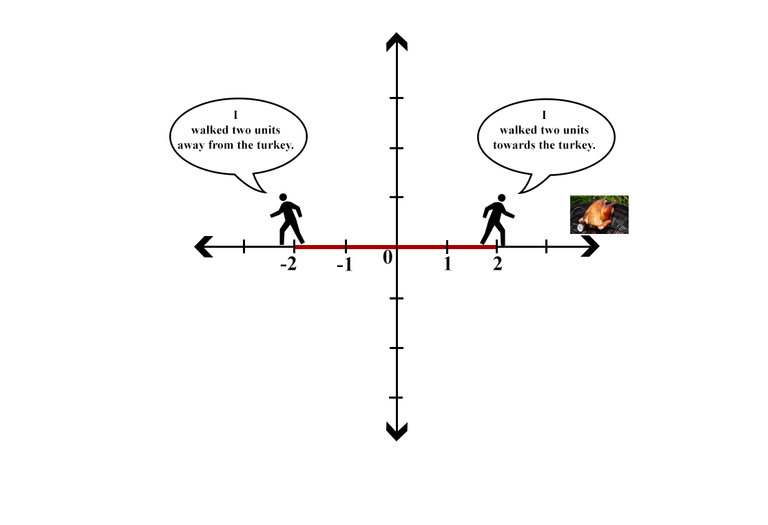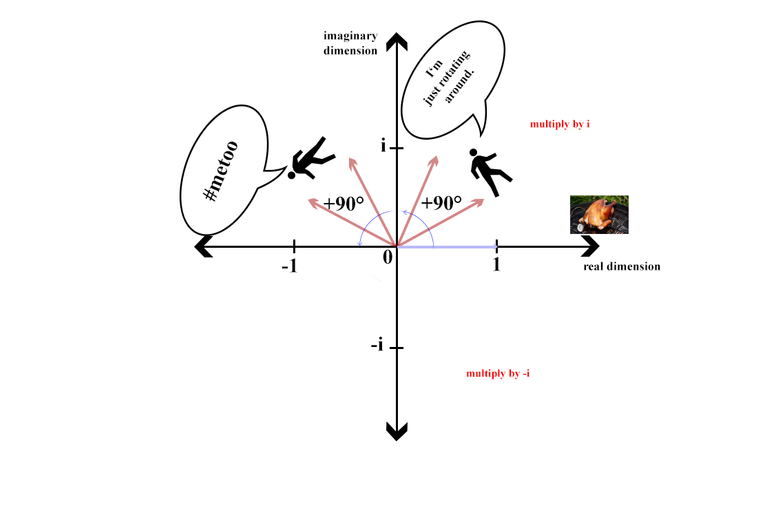Prologue
As promised a few days ago, I am going to cover the content of my studies quite extensively. There are several reasons why I am going to do that.
- It helps me to break down important ideas and achieve a better understanding of the concepts involved. Hence, it’s an ideal preparation for any upcoming exams.
- I’m a firm believer in knowledge acquisition and distribution. The more knowledge a person can get the better said person will be off. Nothing I am going to describe within this series is something completely new. At least not regarding the content.
But the way I am going to write about these things is, hopefully, somewhat original. Since you are already familiar with my charming personality, maybe you will like this series as well. Ideally, this is going to make the portrayed concepts easier to grasp for everyone. I want you to be smarter after reading my articles. I’m also always open for discussions and different ideas. Feel free to share your own thoughts about my posts.
- The sick gainz. Let’s be honest with each other: many people came for the money to Steemit. I’m no exception. I’ve met amazing people over the course of the past months and this is all great and all – but my initial motivation is also still there: I really like to see a big number of STUs next to my articles. So, as always, if you find my articles helpful in any way, feel free to upvote, share and comment.
Thanks in advance!
Disclaimer:
Many mathematical ideas will be explained using my own lecture notes and the work of Kalid Azad from betterexplained.com as basis. I have contacted Kalid and asked him, whether it was ok for me to use his books as inspirational sources and he gave me the permission to do so. I am not going to copy his work but providing my own take regarding these concepts – but I know his books about math and calculus helped me a lot to achieve a better understanding of the topics at hand.
If you are struggling with math, give his website and his books a try – you won’t regret it. Pinky promise!
At the beginning, there was math
When you are starting to study anything connected to computer science you will end up with a lot of math in front of you. Don’t fool yourself in thinking otherwise. And don’t be scared.
I’m aware of the many people who struggle with mathematical ideas, it’s often challenging for me as well – but this only means, I haven’t found a way of understanding the ideas which suits me.
I will try my best to present you approaches which have helped me in the past and provide you with a detailed understanding of mathematical concepts which are important for studying computer science. Although I’m not starting with the absolute basics, I will explain as much as possible. Ideally, you should be able to follow my thoughts step by step.
Let’s ask the most important question right at the start:
What are complex numbers?
Any number which is formed in the way of a + bi - with a and b being real numbers while i is something different – it’s an imaginary number. 6 + 7i is by this definition a complex number.
Wait, what? Imaginary numbers? What the heck?
Relax. Nothing to worry about. Before we go further, I will remind you of some basic ideas regarding numbers.
Currently we are classifying numbers like that:
| Name | Symbol | Examples |
|---|---|---|
| Natural numbers | ℕ0 | {0, 1, 2, 3, . . . } |
| ℕ | {1, 2, 3, 4 . . . } | |
| Integers (whole numbers) | ℤ | {. . . ,−3,−2,−1,−0, 1, 2, . . . } |
| Rational numbers | ℚ | { a/b ; a ∈ ℤ, b ∈ ℤ \ {0}} |
| Irrational numbers | as far as I know there is no widely accepted symbol, but these numbers are defined as {ℝ \ ℚ} – that means a real number ℝ is irrational, if you cannot describe it as a fraction of two integers. | π, e or √2 |
| Real numbers | ℝ | All of the above combined. |

Fancy diagram taken from here
And now we are just expanding our current understanding of numbers by another category:
Complex numbers ℂ
Think about it like this: until the 17th century people were highly confused regarding the usage of negative numbers. How can you have less than nothing and even use it in calculations? This was not something one was able to understand intuitively back then. But now, a few hundred years later, even children get the idea behind it. Eventually, the same will happen to our understanding of complex numbers at some point.
Nobody in his right mind would argue these days that negative numbers aren’t useful. Even if there is no “real world” equivalent to “less than nothing (zero)”, we can still use this idea to make accurate descriptions of things like debts and underground parking lots (yes, without negative numbers it would be hard to put useful symbols into an elevator…).
The invention of negative numbers made math more efficient. Imagine a guy walking along a graph towards a tasty piece of grilled turkey. With negative numbers you will always know at which point the guy currently is – and whether he comes closer to the turkey or not.

My own creation and the use of an innocent turkey
Smooth, right? At the end of this post you will, hopefully, have a similar intuitive understanding of complex numbers.
Why all the fuzz about negative numbers? Don’t get me wrong, I don’t think you guys have problems to understand the idea behind them – and that’s great!
It’s because of that very reason, why I started to explain complex numbers by using negative ones. You are already quite familiar with the idea behind one of them, so the next step shouldn’t be so hard to take.
Imagination is negative
Most of you will have no problems solving equations like x2 = 4 {2; -2} or x2 = 25 {5; -5}. That’s basic stuff we all learned years ago in school.
But what about x2 = -4?
C’mon bruh. How should it be possible to get a square root of something smaller than zero?
Worry not, Imaginary Man to the rescue!

Imaginary Man is my own creation. Background taken from Pexels
Ok, granted, he is kind of a dick sometimes but deep down he’s a cool guy. I promise.
How can this guy help us in solving equations like x2 = -4? We will get to it shortly.
Ask yourself the following:
Why do we need math? Is it just some notorious tool which was invented to torture generations of innocent children? Probably not. We, as humans, realized that we can use math (and therefore numbers) as quite an efficient way to describe the world around us. We can put relationships between events into perspective and measure how strong this relationship is (correlation in statistics) or calculate the energy needed to send a rocket to the moon (physics). To do this, we created numbers and a universal language which can help us in achieving it – math.
This is the beauty of the human mind: we can just think about something and define a thought as an existing entity. Take Bitcoin or money in general as example. Humans defined some numbers or pieces of paper as worth of something. We just created it, because it came in handy. The same is it with math. We created it, because it helped us to accurately describe the world we are living in. We decided numbers like 0; -5 or 7.94 exist. Just like that. And in the same sense we created so-called imaginary numbers - i.
Furthermore, we defined a key aspect of these new numbers as
i2 = -1
Multiplying i2 with itself will get you -1 – easy, right? Don’t think so much about whether i exists or not – it’s just called imaginary number but when it comes to using it, it’s as real as 0 or -5. Don’t let the term confuse you.
How to read (and understand) equations
Let’s take a look at one of our example equations from the start:
Now we want to be wisecracks and say smart stuff like
”Well, actually this equation should be read as
Well done, genius. Now ask yourself what do you need to do with that pesky x? How do you need to change it, that two times of said x will turn a 1 into a 4?
As we already established above, the obvious answers are {2; -2}. Ez pz.
Now we can start with the fun part.
Remember our initial change in that equation? We put an annoying negative sign in front of the 4 and suddenly everything was confusing:
Let’s do this with the simplest example possible: x2 = -1
Well, this is awkward. How do we get to the point where a squared x will end up being -1? We know, we can’t just use negative numbers, because multiplying numbers with identical signs will always result in a positive outcome. But we still want to prove that our equation is true. Meh.
To solve this issue, we have to think differently. We have to leave the comfort of our current directional path and think about numbers in a different way.
Remember that guy walking towards (or away from) the turkey? This is what negative numbers were good for. They provided us with an understanding of direction.
Now it’s time for something different.
Rotations, bitches!
Ahem. Sorry, I couldn’t resist.
To achieve an even better understanding of complex numbers, we can again use graphs to put matters into an easy-to-digest perspective.
Think about the guy walking on the graph. Back then, we knew about his walking direction using positive and negative numbers. Now, we are going to make him dizzy via rotating.
Imagine it like this:

Ok, what do we have here?
Our guy moved one unit towards the turkey (1 ∙ x2 = -1). Then he stopped and Imaginary Man rotated him once (i) and a second time (i2).
Hm. Seems logical, right? Rotate counter-clockwise and you can magically turn 1 into -1.
Since only smart people are reading this blog you will already see the obvious:
You can, of course, also rotate clockwise or as the wisecracks call it – multiplication by -i.
Take a look at the graph above.
Our guy can just take the “negative” route to achieve the same outcome.
Put into mathematical terms: our initial -1 has two square roots - i and -i.
Neat.
Take-Away
A short overview of what we have learned today:
We can explain what the difference between integers (whole numbers) and imaginary numbers is – the first one provides us with knowledge about the direction of an object and the latter gives us an idea about its angle, hence it’s rotation.
Whenever you multiply by i you rotate 90° counter-clockwise and 1 will become i.
Whenever you multiply by -i you rotate 90° clockwise and 1 will become -i.
Whenever you multiply twice (either i or -i) you will end up in our familiar realm (dimension) of positive and negative numbers – in this case at -1.
You gained a new understanding of how to look at numbers. Now you can understand why numbers are 2-dimensional. This is some crazy shit you can pull out for your next dinner party. Tell me about the reactions!
Remember when I told you about a key aspect of imaginary numbers?
i2 = -1
Now you can explain why that is. If not, I shall be ashamed of myself in failing you so miserably.
There is, of course, a lot more to imaginary and therefore complex numbers, but this should be enough for today.
See you next time.
Feel always free to discuss my ideas and share your own thoughts about the things I’m writing about. Nobody is omniscient and if we all walk away a bit smarter than before, we’ll have achieved a lot.
Thanks for reading and stay sceptical.

Make sure, to check out #steemstem for more science related content.
There are so many question. D: But I will start with why you want to compare imaginary numbers to integers. Integers are discrete. Imaginary numbers are not discrete. D:
I was waiting for your input :P
My answer is actually quite simple:
I wanted to work with examples people can relate to. For me it was important to explain the basic idea behind imaginary numbers to people without any previous knowledge about them. I'm fully aware there is much more to say and my approach is quite simplistic (But honestly, my professor didn't care to make that distinction as well - so why should I? :P ) - but in my opinion it's important to get the basic ideas first and then dive into details and how these affect the ideas.
Using DNA samples to explain a cat to someone who has never seen a cat is quite pointless - you get my idea?
Seeing the whole number numbers as two directions and comparing them with the complex numbers as a to dimensional object is a good idea.
As set the whole number are not really special, because the whole number and natural numbers are both countable sets.
Posted using Partiko iOS
I am trying to point out the following:
So imaginary numbers is the set given by all the real numbers times i. So it is a continuous spectrum. Then it makes sense to compare them to the real numbers.
Similarly, when dealing with the integers in this setting you might want to compare them to the set given by multiplying all the integers times i.
That is a defense not a answer to my question. I explained my question in more detail in response to a comment of quekery.
This post has been voted on by the SteemSTEM curation team and voting trail in collaboration with @curie.
If you appreciate the work we are doing then consider voting both projects for witness by selecting stem.witness and curie!
For additional information please join us on the SteemSTEM discord and to get to know the rest of the community!